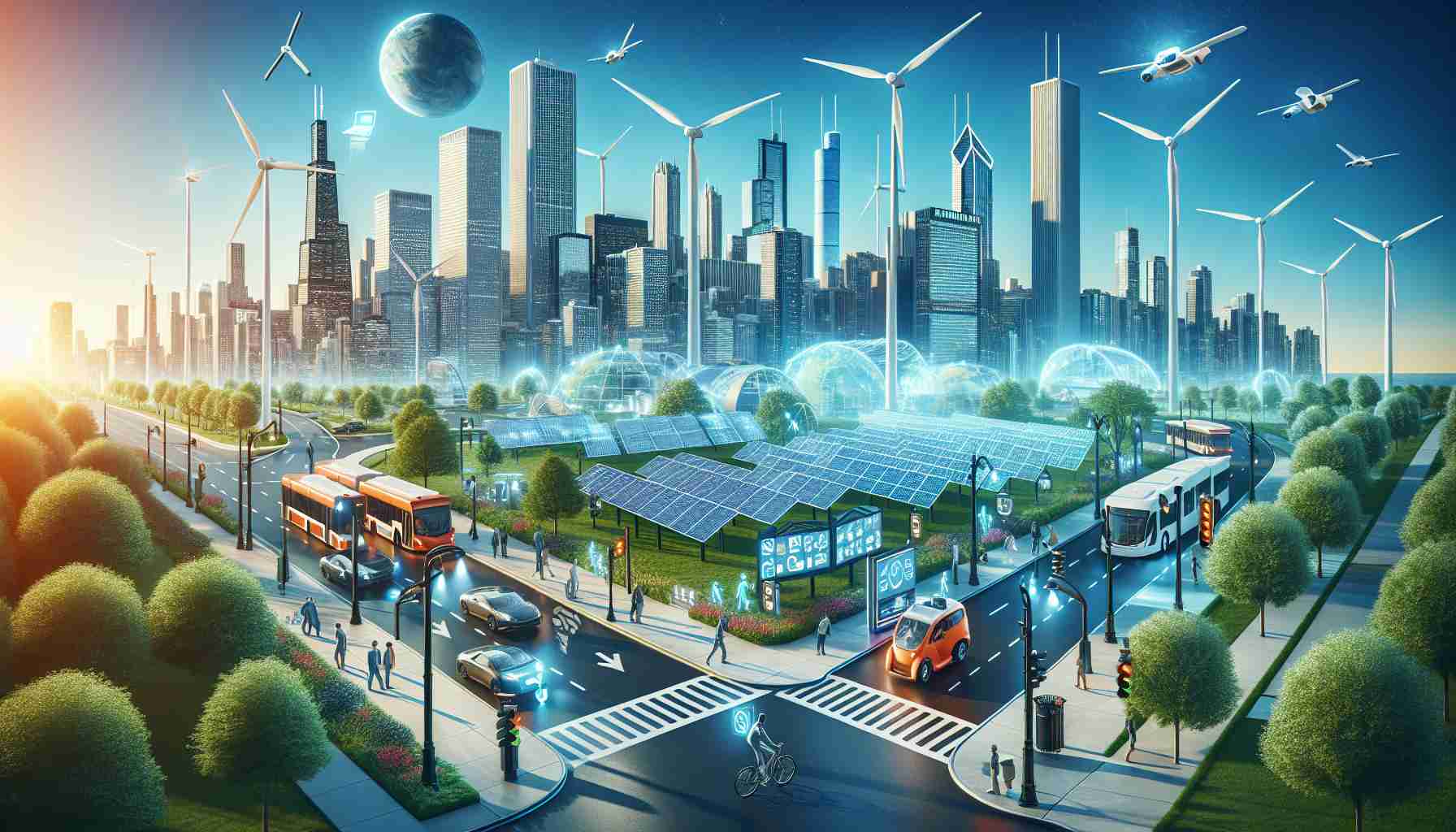
Transforming Municipal Energy Use
In a groundbreaking move, Chicago has committed to powering its municipal buildings entirely with renewable energy, a feat accomplished through a significant renewable energy agreement. This includes over 400 buildings, from fire stations to major water treatment facilities, and aims to cut down the city’s carbon emissions by about 290,000 metric tons annually.
The initiative is fueled by a partnership with Constellation and Swift Current Energy, leading to the establishment of a massive solar farm in Illinois—the Double Black Diamond Solar project. Covering 3,800 acres, it is poised to produce enough electricity for over 100,000 homes. The city plans to cover 70% of its energy needs from this solar output, with additional renewable energy credits making up the remainder.
This ambitious project not only supports local decarbonization but also showcases Chicago’s economic foresight. Along with the environmental benefits, it is expected to generate $100 million in tax revenue for the counties hosting the solar site.
Chicago’s chief sustainability officer highlighted that there are abundant opportunities in this transition, promoting equity and new jobs, particularly for women in green energy fields. As cities nationwide also strive for similar energy goals, Chicago sets a powerful example of how local initiatives can lead the charge towards sustainability amid changing federal policies.
Chicago’s Bold Leap Toward 100% Renewable Energy
Transforming Municipal Energy Use
Chicago is making headlines with its commitment to power all municipal buildings with renewable energy. This significant initiative is a pioneering step for cities across the United States, setting a benchmark for sustainability and environmental stewardship.
Key Features of the Renewable Energy Initiative
The renewable energy agreement, forged in collaboration with Constellation and Swift Current Energy, encompasses over 400 municipal structures. This includes essential services like fire stations and water treatment facilities. The city’s objective is to reduce carbon emissions by approximately 290,000 metric tons each year, marking a significant stride toward achieving urban sustainability goals.
Double Black Diamond Solar Project:
– Covering an impressive 3,800 acres, the solar farm associated with this initiative is expected to produce enough energy to power over 100,000 homes.
– Chicago aims to fulfill 70% of its energy requirements from this solar output, while renewable energy credits will contribute to the remaining 30%.
Economic and Social Impacts
This initiative is not just an environmental win; it also has substantial economic implications. The project is anticipated to generate around $100 million in tax revenue for the counties where the solar facilities are located, thereby supporting local economies.
Furthermore, the city’s Chief Sustainability Officer has emphasized the importance of equity in this transition. There will be new job creation opportunities, especially aimed at increasing participation from women in the green energy sector. This aligns with national trends focusing on sustainable job creation and workforce diversity.
Sustainability Trends and Comparisons
Chicago’s proactive steps mirror a growing trend among urban centers working to adopt renewable energy resources. Cities like Los Angeles, New York, and San Francisco are also implementing similar strategies to reduce their reliance on fossil fuels and transition to green energy. As municipal policies continue to evolve, cities can learn valuable lessons from Chicago’s ambitious plans.
Innovations in Renewable Energy
The deployment of large-scale solar projects, such as the Double Black Diamond Solar Project, illustrates a key innovation in renewable energy. It showcases how cities can leverage partnerships with private sector players to accelerate their transition to renewable sources. This collaborative model can serve as a template for similar projects in other urban settings.
Limitations and Challenges
Despite its positive outlook, this initiative may face challenges such as:
– Regulatory hurdles that can slow down implementation.
– The need for ongoing support from local, state, and federal governments to maintain momentum.
– Potential resistance from community stakeholders concerned with land use for large solar installations.
As Chicago leads the way in municipal renewable energy, the implications of this project extend beyond local boundaries, influencing national energy narratives and urban policy discussions.
Conclusion
With its ambitious renewable energy project, Chicago is proving that cities can lead the charge in combating climate change while promoting economic growth and equitable job opportunities. As more cities aim for similar goals, Chicago’s experience will serve as a valuable case study for innovation in sustainability.
For further insights on sustainable city initiatives, visit Chicago Climate Action.



